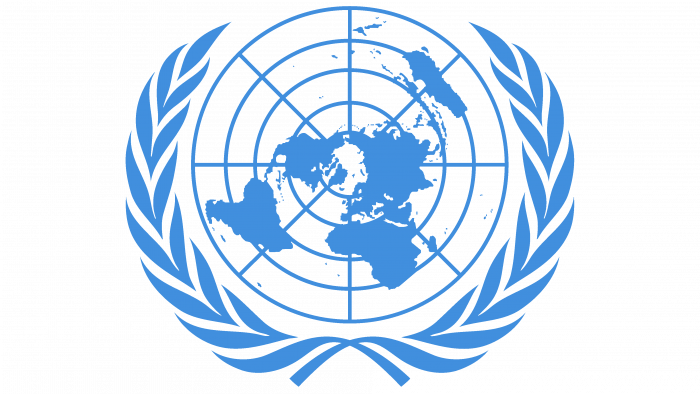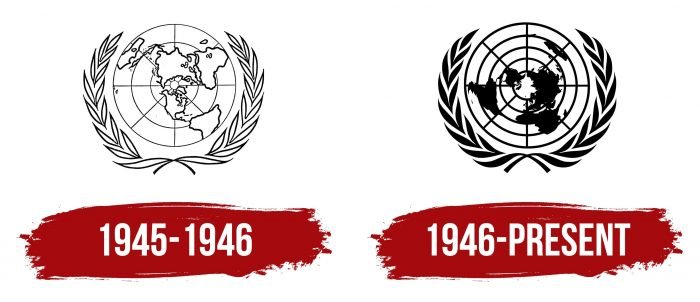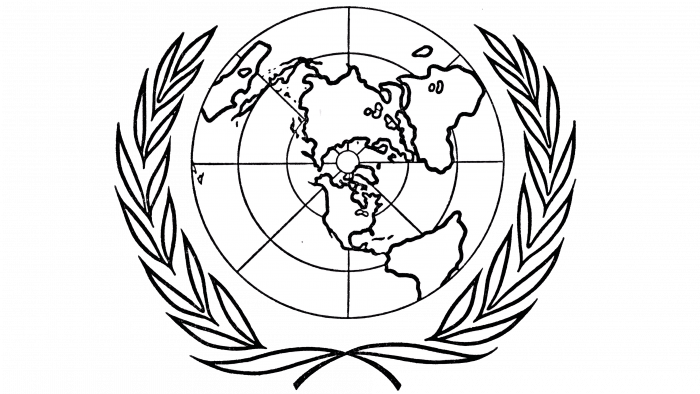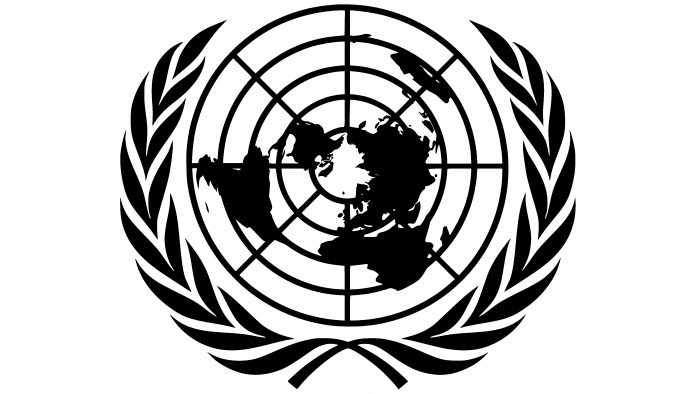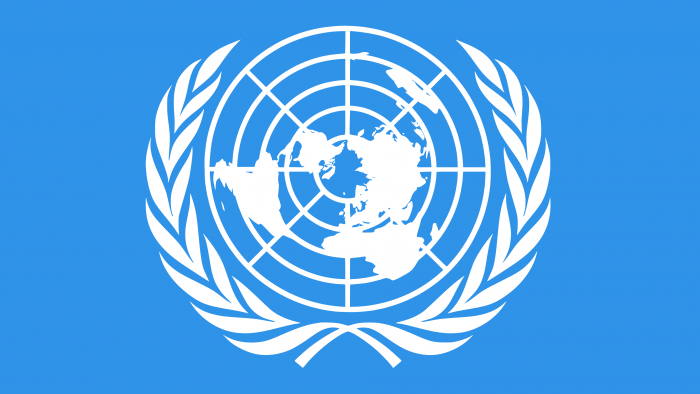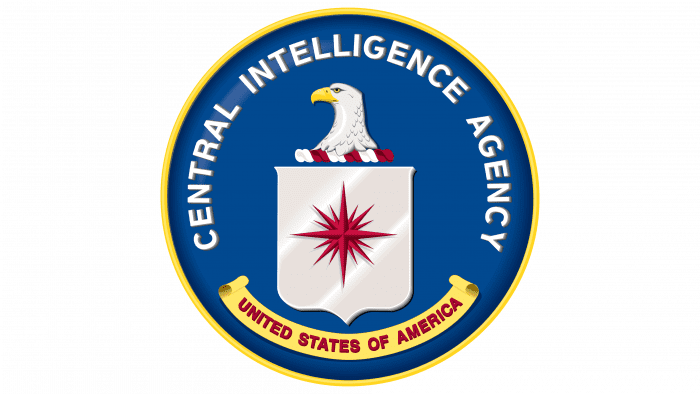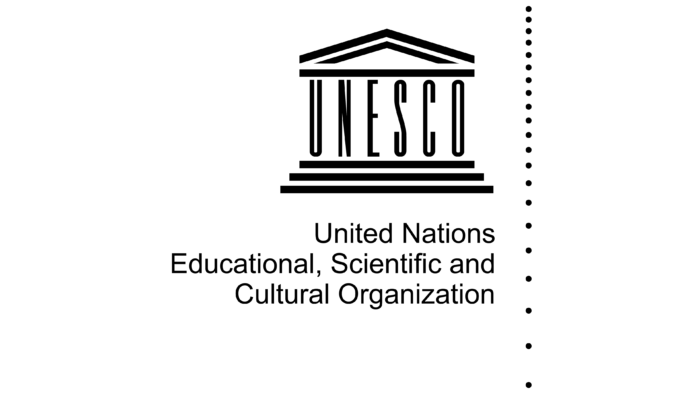The UN logo is a sign of victory. The organization’s focus is the oceans and continents; it surrounds the entire globe with care and attention. The emblem conveys the main goal of the association – maintaining peace, health, and prosperity on the planet.
UN: Brand overview
| Founded: | 1945 |
| Headquarters: | Manhattan, New York City, U.S. |
| Website: | un.org |
Meaning and History
The United Nations has had 51 members since 2011; another state joined the list – South Sudan. In total, the council consists of 193 people who represent most of the sovereign countries. According to the rules, they are engaged in protecting the rights of people, providing humanitarian assistance, maintaining peace, and monitoring the observance of international rights.
To better manage processes and track what is happening, the organization has created six key bodies, several committees, funds, and programs. The official languages of the UN are Arabic, Chinese, English, Russian, French, and Spanish. The emblem of the intergovernmental organization was adopted along with the charter. A team of professionals led by Oliver Lincoln Lundquist, an architect, and industrial designer, tried to reflect the core missions of the global service. There are two United Nations logos in total.
1945 – 1946
The debut version is a flat projection of the globe. The view is directed from above, from the side of the North Pole. Closely located continents radiate from it in all directions. This view of the planet is associated with the desire to show that all countries on the planet are interconnected and close to each other and their interests. In the original version, the map extends to the 40th parallel south.
The outlines of states are schematic, without overlaying a gradient; they are white on the inside with an outer black outline. The background is a ball with three concentric circles inside and eight meridians, which diverge from the center in different directions. The indents between the parallels are wide. Generally speaking, the first logo is very similar to a target for shooting or playing darts – both in structure and colors. The symbolic globe is surrounded by two branches of a laurel tree, collected in a classic wreath. It consists of six paired leaves on each side and one single one at the top.
1946 – today
After only one year, the debut emblem went through some adjustments, as it showed its shortcomings. So, the designers changed the viewing angle, depicting the planet not up to the fortieth but up to the sixtieth parallel. This made it possible to slightly increase the space to see the continents much more clearly. Such a measure led to the appearance of another concentric circle, so now the whole world is visible on a flat map.
According to cartography, the authors made the meridians (there are eight) and parallels (now there are five) wider. They also painted them black, like the rest of the land, leaving only the body of water white. The laurel wreath also turned black. The developers have corrected it, making the edges of the leaves smooth and even. They expanded the center part of the concentric circles to look like a full circle instead of a big dot.
UN: Interesting Facts
The United Nations (UN) was created in 1945, right after World War II ended, to stop future wars and help countries work together better. It has 193 countries as members and works on important issues like peace, health, and human rights.
- Start: It began on October 24, 1945, with 51 countries wanting to keep peace, help nations get along, improve living standards, and support human rights.
- Languages: The UN uses six official languages, Arabic, Chinese, English, French, Russian, and Spanish, to include everyone in conversations and decisions.
- Where It’s Based: Its main office is in New York City, on land that belongs to all the member countries, not just the U.S. It also has big offices in Geneva, Vienna, and Nairobi.
- Peace Missions: The UN is known for sending peacekeeping missions to places with conflicts to help resolve them. It has conducted more than 70 missions like this.
- Nobel Peace Prizes: The UN and its parts, like UNICEF and the World Food Programme, have won the Nobel Peace Prize several times for their work to improve the world.
- Human Rights: In 1948, the United Nations adopted the Universal Declaration of Human Rights, a key document outlining basic rights and freedoms for everyone.
- Special Groups: It has many specialized groups focusing on different issues, such as health (WHO), food (FAO), education and science (UNESCO), and development (UNDP).
- Security Council: This part of the UN keeps peace worldwide. It has 15 members, including five big countries (China, France, Russia, the UK, and the US) that can veto or reject decisions.
- Development Goals: In 2015, the UN set 17 goals to make the world a better place by 2030, such as ending poverty, protecting the environment, and ensuring everyone can live in peace and prosperity.
- Big Meetings: Every year, world leaders meet at the UN General Assembly, the biggest gathering of its kind, to discuss global issues.
The UN is crucial for tackling big world problems like helping in crises, protecting the environment, solving conflicts, and supporting democracy. Its work affects billions of people across the globe.
Font and Colors
Elements of the UN logo are used in the identity of all its organizations and committees. This emphasizes their connection and also reflects the main mission – cohesion, cooperation, unity.
The basic emblem has no inscriptions – it has only a graphic part. The text is used to refer to the six governing bodies that make up the United Nations structure. But sometimes, the mark is supplemented by the name made by the typeface Roboto.
In the modern version, in addition to white and black, the blue color of the natural shade of our planet, which is visible from space, also appears. Authors advise choosing blue under the code # 009edb or Pantone 2925.
UN color codes
| Spanish Sky Blue | Hex color: | #009edb |
|---|---|---|
| RGB: | 0 158 219 | |
| CMYK: | 100 28 0 14 | |
| Pantone: | PMS 801 C |
| Black | Hex color: | #000000 |
|---|---|---|
| RGB: | 0 0 0 | |
| CMYK: | 0 0 0 100 | |
| Pantone: | PMS Process Black C |
